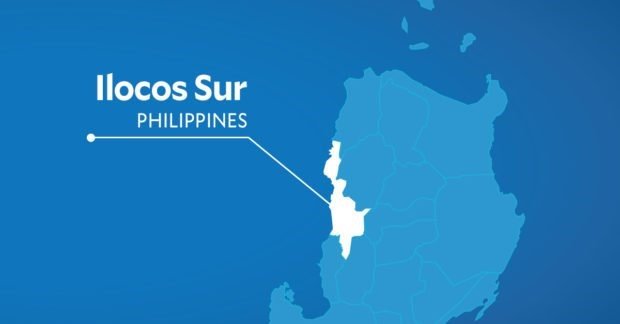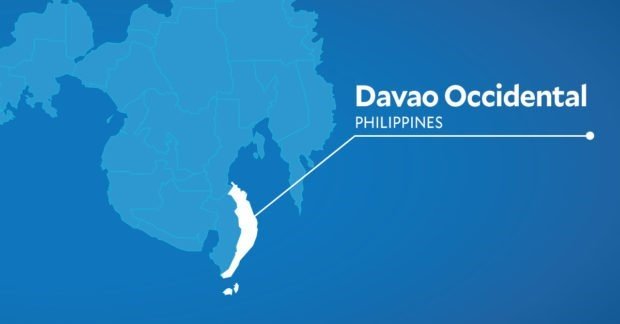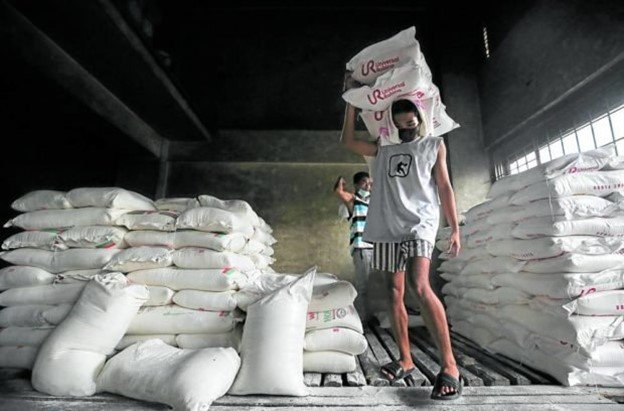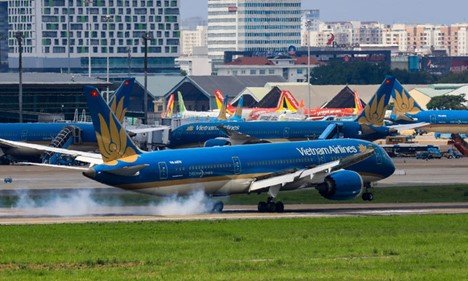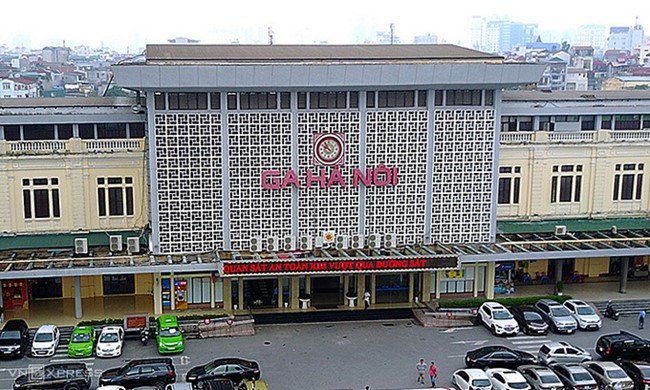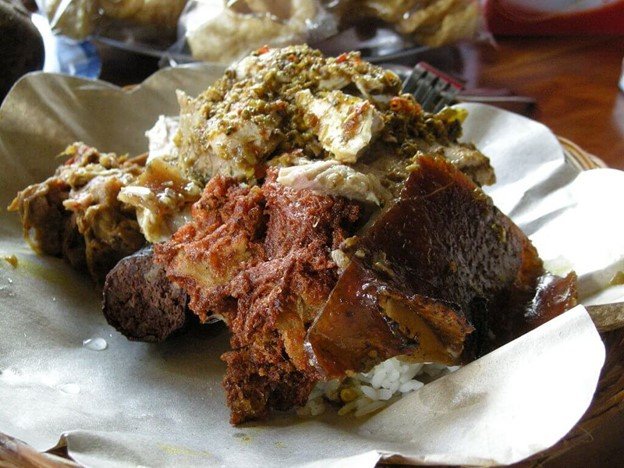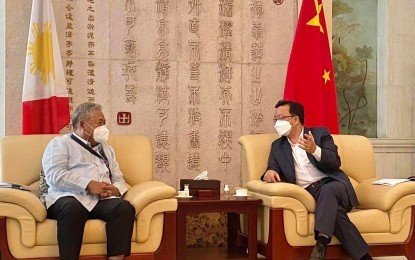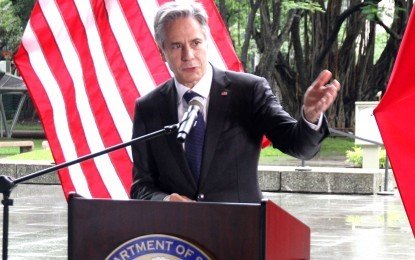-
Posts
2,719 -
Joined
-
Last visited
Content Type
Events
Forums
Downloads
Quizzes
Gallery
Blogs
Everything posted by ASEAN NOW News
-
Melia Ba Vì Mountain Retreat on the outskirts of Hanoi is surrounded by green nature. Photo courtesy of the resort A resort in Hanoi and a second in the southern province of Ba Ria-Vung Tau have been named winners in different categories of the 2022 International Travel Awards. Melia Ba Vi Mountain Retreat, a short ride from Ba Vi National Park on the outskirts of Hanoi, won the "best wellness resort" title. The resort's architecture is a combination of French colonial and ancient Vietnamese designs. It has eight rooms and three- to five-bedroom villas with views of green mountain ranges. Wind Boutique Resort & Spa in the southern province of Ba Ria-Vung Tau was the winner of "best boutique resort" category. Just a few meters from the 32-meter-tall Statue of Christ, a symbol of Vung Tau, the resort on a mountainous hill has 20 rooms overlooking the beach. A swimming pool inside Wind Boutique Resort & Spa in Vung Tau. Photo courtesy of the resort Lyall Hotel and Spa in Australia won the "best luxury boutique hotel" title while Fairmont Mayakoba in Mexico was crowned best spa hotel and Hoar Cross Hall in the U.K., best spa resort. Thailand winner Silavadee Pool Spa Resort Silavadee Pool Spa Resort in Thailand's Koh Samui won the "best honeymoon hotel" title. This year's awards saw a record-breaking season as the hospitality and tourism industry witnesses a comeback, with over 2,000 nominations from six regions including Asia, Europe, the Middle East, Africa, Oceania and Americas, along with 300 winners. Organized by Dubai-based Golden Tree Events Organizing and Managing Company, International Travel Awards is one of the most prestigious in the global travel and hospitality industry.
-
With the cost of living partly to blame many Asians are prepared to go abroad to make enough to send back funds to their families. Many are often encouraged by friends who are already there to give it a go. Unfortunately, some of the friends are themselves desperate to leave but their bosses say you must first recruit friends before they will consider allowing them to leave. Cambodia is one country that needs to do a lot more to protect workers, especially those that are shipped over by unscrupulous agents offering them work. This week we reported about the tragic drowning of a Vietnamese teenager who drowned trying to escape from a casino. 42 Vietnamese Casino workers He was part of a group of 42 and Cambodian police said an investigation was ongoing to bust potential human trafficking rings involved in the case. (see footnote) Escapees from the casino said there were over 2,000 Vietnamese brought to Cambodia as illegal workers in several casinos. An Giang police cooperated with counterparts of Cambodia's Kandal Province on Friday to search for all illegal workers being held at local casinos so they could return to Vietnam. Cambodian police said they found 11 people being held at casinos in Chrey Thum Commune. Spokesperson for the Vietnam Ministry of Foreign Affairs Le Thi Thu Hang on Friday said Vietnam has requested Cambodia to assist in the investigation and help find missing people in the case. Human Rights website is reporting many similar cases. This week South Korea arrested over 600 foreigners from Asia who were in the country working without work permits. Also Chinese and Cambodian employees who worked at the Diamond C Branch II casino in Preah Sihanouk province’s Commune 3 sought police intervention to help solve the case after their employer ran away without paying their wages. Authorities said if all foreign and Cambodian workers had legitimate employment contracts, the ministry would solve the case for them. Collective Union of Movement of Workers (CUMW) president Pav Sina said the department’s decision to put up the company’s property for sale could be a lengthy process. The workers, he said, will have to wait a long time and without an income too. In March 2022, a total of 103 Chinese migrant workers have been stranded in Sulawesi for more than five months. According to the workers, they came to Indonesia on work visas but their Chinese employers refused to renew their visas as work had been suspended. Workers' poor physical and mental health conditions have become a matter of concern. Among the 103 workers, at least 90 are ordinary migrant workers, and some are directors or managers. 95% of them are from Linfen, Shanxi Province, who have been working in Indonesia since November 2019. Immigrants stopped by border patrols Exploitative recruitment remains a risk for many migrant workers. World Cup unfair exploitation Ahead of the 2022 FIFA World Cup in Doha, Qatar’s hospitality sector must use this opportunity to address abusive recruitment practices for migrant workers – who are likely to face consequences long after the World Cup has ended. We can only hope that the World Cup helps the cause of unfair exploitation and that future APEC meetings in Thailand can discuss ways and means for migrants in the trouble to have the means to reach authorities for assistance. Footnote: General Keo Vannthan, from the Cambodian Immigration Department spokesman, told Cambodian media on Monday that he had led a team to Golden Phoenix Entertainment Casino in Chrey Thom Commune, Koh Thom District, Kandal Province and detained the manager for questioning, Khmer Times reported. The inspection resulted in the arrest of the casino manager, a Chinese national whose identity has yet to be revealed.
-
Tourists visit Maya bay at Krabi province, Thailand, January 3, 2022. Photo by Reuters/Athit Perawongmetha The Thai government has increased the period of visa-free stay for tourists from over 50 countries including Vietnam from 30 days to 45. The extension, to take effect from October, is part of the government's efforts to boost economic recovery post-pandemic as it eyes 8-10 million foreign arrivals this year, Bangkok Post reported. Thailand, one of the world's most popular travel destinations, has lifted all Covid restrictions for foreign tourists and seen 3.78 million tourists arrive this year. Vietnam reopened its borders in mid-March and resumed its visa exemption policy for 24 countries with maximum stays of 15-30 days.
-
A section of Van Don-Mong Cai Expressway in Quang Ninh Province. Photo by VnExpress/Le Tan A 176-kilometer expressway section from Ha Long Bay to China border gate Mong Cai is set to open to traffic next week, but no gas station or rest stop has been built yet. VN Express reported that authorities have announced that the Tien Yen - Mong Cai (63.3 km) and Van Don - Tien Yen (16.1 km) sections will open to traffic on September 1, connecting with the Bach Dang - Dai Yen (25 km) and Ha Long - Van Don (71.2 km) sections. With this, Quang Ninh Province will have the country's longest expressway section, 176 km from Ha Long to Mong Cai, part of the Hai Phong – Ha Long – Van Don – Mong Cai Expressway linking the northern port city of Hai Phong with Quang Ninh. There are, however, no gas stations or rest stops along the route. Do Quan from Hanoi said he frequently traveled to Quang Ninh Province for work. While the express will make it more convenient to travel, there are no gas stations in the new sections as well as the ones that are already in service, the 32-year-old said. He also pointed out that there were no service stations along the route, leaving drivers stranded if a problem like a flat tire or engine failure occurs. Current law requires all road and transportation infrastructure to have pedestrian lanes, parking stations, rest stops, and other works. There must be one stop along the route outside the roadbed every 15-25 kilometers. A standard technical service station (capable of supplying petrol and oil, making minor repairs, and stopping cars, with motels, toilets, and restaurants) should be located every 50-60 km. And every 120-200 kilometers requires a large service station. Hoang Quang Hai, director of the Quang Ninh Department of Transport, said that the Provincial People's Committee has directed that a service station be built on the expressway. Soon, the province will auction the work of constructing two stations at either end of Van Don-Mong Cai Expressway, he said.
-
Pexels From 2013 to August 2020, a man sexually assaulted 11 boys who were enrolled in an after-school care centre where they would be guided on doing their homework. SINGAPORE — While working as a teaching assistant at an after-school care centre from 2013 to 2020, a man abused his position to get close to about a dozen boys before sexually preying on them, reported Today. He would buy them gifts that they liked to gain their trust and started showing physical acts of affection by hugging them and kissing them on the cheeks. Over time, as the boys slowly got comfortable with him, the man would sexually assault them. The man carried on with his crimes virtually undetected until an overseas law agency notified the police here that emails containing child pornography were traced to an account linked to him. Investigators later found videos showing him sexually assaulting the victims. Each of the victims’ faces could be identified in the videos, which the man admitted he had recorded "for his own pleasure", court documents stated. On Monday (Aug 22), the High Court sentenced the man, now aged 30, to 42 years jail with a maximum 24 strokes of the cane. He pleaded guilty to six charges of aggravated sexual assault by penetration, with 54 other charges taken into consideration for the purposes of sentencing. The man and the care centre cannot be named due to a court order to protect the identities of his victims, who were all aged 14 or below at the time of his offences. Court documents showed that the man was enrolled at the care centre during his primary school days and continued visiting the centre occasionally during his secondary school days to do his homework and help with administrative matters. Soon after his National Service in 2012, he began to volunteer at the centre to help students with their mathematics homework about four to five times a week. The principal of the centre began giving him an allowance in 2013 for the work he did, which also included accompanying children on outings. He was also entrusted with a set of keys to the centre. While working there, he gained the trust of the boys by buying them food, gifts, mobile phone game credits and whatever he observed that they liked. He was known to the parents of a few of the boys. He also took some of the boys out for meals and leisure activities at his own expense. He began sexually abusing them with seemingly innocent contact such as hugs or kisses on the cheeks before progressing to kissing them on the lips and initiating sexual contact. From 2013 to August 2020, the man sexually assaulted 11 boys who were under the care of the centre. The offences took place at the centre itself, at the man’s residence and various other places. On some occasions, two or three victims were engaging in sexual acts in a group setting, with the man telling them to do so. Boy's mother saw messages on mobile The mother of one of the victims, who was in Primary 5 and aged 11 in 2015, noticed that her son often wanted to spend time at the centre and would return home late at night. She later checked the boy's mobile phone and saw that the man had sent him messages regularly and mostly late at night, including one that said, “I love you, baby.” When she confronted the man, he rebuffed her and alleged that she had neglected her own son, blaming her for not taking care of her son. The man persisted in contacting the boy even after this run-in with the mother. In 2017, when he was sexually assaulting the boy in the shower room of a toilet at the centre, the boy screamed in pain. In a 2021 report by the Institute of Mental Health, a psychiatrist noted that the boy had post-traumatic stress disorder, which has since resolved. Separately, the man also used social networking application Grindr to find other males for sex. He found one who was under 16 years old, among others. Australian agencies alert local police On April 22 in 2020, the South Australia Joint Anti Child Exploitation Team (Jacet), comprising investigators from the Australian Federal Police and South Australia Police, alerted the Singapore Police Force that an account traced to the man had been the recipient of at least 17 emails containing links to download pornographic materials involving boys aged four to 16. The man’s residence was raided in August 2020. After initial investigations uncovered homemade child pornography that he recorded, the man was again arrested in December that year. A total of 105 of such videos were found in his electronic devices. A report by the Institute of Mental Health found the man to have paedophilic disorder, with a mild to moderate risk of reoffending. In delivering her decision, High Court Judge Mavis Chionh Sze Chyi said that the man had abused his relationship with the vulnerable young victims, some of whom had unquestioningly obeyed him because they had looked up to him. “So successful was the accused at worming his way into the naive affections of his young charges that their parents came to trust him as well,” she added. He had “systematically exploited that trust” by committing the offences in a premeditated and carefully planned manner. “Indeed, I would say the accused exhibited a calculated cunning in the manner he preyed on the naivete and childish sensibilities of his young victims.” Although the man had pleaded guilty, Justice Chionh said that given the 105 incriminating videos he himself had made, she was of the view that he “had little choice but to plead guilty to the proceeded charges; and it is thus doubtful that his plea of guilt indicates genuine remorse”. For each count of aggravated sexual assault by penetration of a child below 14 years of age, the man could have been jailed between eight and 20 years and received at least 12 strokes of the cane.
-
File photo MANILA – After five consecutive weeks of rollbacks, prices of diesel and kerosene are set for a big-time hike on Tuesday. In separate advisories, Caltex, Cleanfuel, Seaoil, and Shell said they will increase diesel prices by PHP2.60 per liter and PHP0.70 per liter on gasoline. Caltex, Seaoil, and Shell will also raise prices of kerosene by PHP2.80 per liter. Other local oil industry players are expected to follow suit. With the price adjustments in the previous week, gasoline prices have increased since the start of the year by PHP27.40 per liter, PHP36.30 per liter for diesel, and PHP30.35 per liter for kerosene. Industry experts said the increase in petroleum prices this week is driven by a tightening of supply, with United States crude inventory declining and the sanctions against Russia continuing to impact demand and supply dynamics and affecting prices. According to OilPrice.com, the volatile oil prices have been impacting traders and other industries. “Businesses will continue to need energy that is in tight supply, but high prices for this energy will continue threatening their growth prospects and the growth prospects of their respective economies,” Irina Slave of OilPrice.com wrote. Dubai crude increased by 0.22 percent last Friday, bringing prices to settle last week at USD95.39 per barrel. On the other hand, Brent and West Texas Intermediate (WTI) prices on Monday declined by 1.69 percent and 1.38 percent, respectively, as of writing. WTI crude has touched below USD90-level. (PNA)
-
MANILA – Leaders of the House of Representatives on Monday said the chamber is committed to buckle down to work and ensure the swift passage of the proposed PHP5.268 trillion national budget for 2023 that is responsive to the needs of the people. Marcos' proposed budget, which is equal to 22.2% of the country's total economic output, is nearly 5% higher than his predecessor's spending plan for 2022. Following the formal turnover of Malacañang’s proposed National Expenditure Program to Congress, House Majority Leader Manuel Jose Dalipe said the House Committee on Appropriations and the Committee on Rules have agreed to work out a system to ensure that the proposed budget is passed on time and ensure the budget process will not be "snagged by unnecessary delays". Dalipe, as the chair of the Committee on Rules, has organized three teams composed of deputy majority leaders and assistant majority leaders to ensure the smooth and seamless flow of discussion once the budget is brought to the plenary. “We have already coordinated with our teams in the committee on rules. We have prepared three teams (composed of Deputy Majority Leaders and Assistant Majority Leaders) and we are ready for the plenary deliberations on the budget. We are also closely coordinating with the committee on appropriations to facilitate our members who would want to fully discuss the budget," Dalipe said in a media briefing. Dalipe said the House leadership led by Speaker Martin Romualdez is committed to passing the spending measure before the end of October and signed by Marcos before year-end. “We only have one thing to do and that is to pass this budget, the General Appropriations Bill. If there is any law that is required for us to act on and that is the General Appropriations Bill. We have prepared for this, we have arranged the teams and we will not be remiss in our job to properly scrutinize the budget,” he said. Deputy Speaker Isidro Ungab assured that Congress, having the power of the purse, would be "diligently" scrutinizing the submitted budget and pass one that will be responsive and dynamic. “The FY 2023 National Budget is the financial interpretation of the government’s plans and programs for 2023. It covers the President’s vision for our nation, which can be realized with the appropriate and sufficient funding for such government’s plans and programs,” Ungab said. Ungab noted that the Development Budget Coordination Committee (DBCC), composed of the National Economic and Development Authority (NEDA), Department of Budget and Management (DBM), Department of Finance (DOF), Bangko Sentral ng Pilipinas (BSP) and Office of The President, has fully considered the realities besetting the present economic conditions in the submitted 2023 proposed national budget, tagged as Agenda for Prosperity: Economic Transformation Towards Inclusivity and Sustainability. House ways and means chair Joey Salceda, meanwhile, vowed to push for special provisions and unprogrammed appropriations to expand food production and reduce inflation to give President Ferdinand Marcos Jr. flexibility "when we earn more revenues next year.” “I plan to introduce amendments to the budget to expand food production and reduce prices through higher productive capacity,” Salceda said. He particularly noted that the provisions he would introduce are unprogrammed appropriations for climate resilience in crops, support for farmers and fisherfolk affected by rising input costs, provisions for government-to-government procurement of food and other agricultural inputs, and provisions for value-chain enhancements. He would also propose provisions allowing the Department of Trade and Industry to support small businesses through capacity building, unprogrammed appropriations to support more farm-to-market roads, and other administration priorities such as tourism roads. Salceda also described the proposed budget as the country’s "Inflation Reduction Act, since this appears to be the most potent opportunity to insert inflation-busting mechanisms.” “After all, the budget should reflect our national priorities, and inflation reduction is currently the biggest, most important one," he added. Deputy Speaker Ralph Recto, for his part, said the government agencies should improve their budget execution, stressing that "the budget is supposed to be spent for the right purpose, at the right time, by the right agency, for the right price." He cited those reports made by the Commission on Audit regarding procurement "fiascos" and huge unobligated amounts highlight the failure to obligate funds promptly and properly. "That failure betrays the public because the tax-budget dynamic is that taxes paid by the people without disputing must be spent for projects that would benefit them without delay. That is the social contract that underpins the budget," he said. He said the issue should be addressed through a budget provision that will prohibit agencies from "parking" their funds in the Procurement Service of the Department of Budget and Management (PS-DBM) and the Philippine International Trade Corp. (PITC) to skirt procurement laws. "The elephant in the room that must be addressed in this particular. If the thrust of this budget is recovery from the pandemic, then how fast our recovery is will depend to a considerable extent on how fast we spend the budget. There should be no repeat of last year’s budget utilization rate, when PHP784.8 billion remained undisbursed by end of the year, on top of PHP88.8 billion in unreleased appropriations," Recto said. (PNA)
-
MANILA – Tropical Storm Florita slightly intensified as it continues to move slowly westward, the weather bureau said. In its 11 p.m. bulletin, the Philippine Atmospheric, Geophysical and Astronomical Services Administration (PAGASA) said “Florita” has a maximum sustained winds of 85 kilometers per hour near the center and gustiness of up to 105 kph. Heavy too intense with at times torrential rains are expected over Cagayan, Isabela, Cordillera Administrative Region, Ilocos Region, and Zambales Monday night through Wednesday. Moderate to heavy with at times intense rains are also expected over the provinces of Camarines Norte, Camarines Sur, Aurora, Quezon, Bataan, and the rest of Cagayan Valley. PAGASA also forecasts light to moderate with times heavy rains over Metro Manila, Calabarzon, and the rest of Central Luzon. The southwest monsoon or "habagat" will also bring rains over Western Visayas in the next 24 hours. Winds may reach gale-force in strength in any of the areas where Wind Signal No. 2 is hoisted through the passage of “Florita”. It said the tropical storm and “habagat” will also bring moderate to rough seas (1.2 to 2.8 m) over the western seaboards of Northern and Central Luzon and the eastern seaboards of Visayas and Mindanao. Tropical cyclone wind signal (TCWS) No. 2 remains hoisted over Cagayan, the southern portion of Babuyan Islands (Camiguin, Fuga, Dalupiri, Pamuktan, Barit, Mabag, Irao islands) Isabela, Quirino, the eastern and central portions of Nueva Vizcaya (Kayapa, Ambaguio, Solano, Villaverde, Bagabag, Diadi, Quezon, Bayombong, Bambang, Aritao, Dupax del Sur, Dupax del Norte, Kasibu, Alfonso Castaneda); Apayao, Abra, Kalinga, Mountain Province, Ifugao, the northern portion of Benguet (Bakun, Kibungan, Buguias, Kabayan, Mankayan, Bokod, Atok), Ilocos Norte, Ilocos Sur, and the northern and central portions of Aurora (Dilasag, Casiguran, Dinalungan, Dipaculao, Baler, Maria Aurora). TCWS No. 1 is also affecting many parts of Luzon as well as Visayas and Mindanao. (PNA)
-
According to the popular website Numbeo you would need around THB71,941.21 (47,173,530.09₫) in Da Nang to maintain the same standard of life that you can have with THB80,000.00 in Pattaya (assuming you rent in both cities). Pattaya Beach This calculation uses Numbeo’s Cost of Living Plus Rent Index which they update monthly to compare cost of living. These figures assume net earnings (after income tax) if you are paying tax. Here are some interesting figures: Consumer Prices in Da Nang are 8.05% lower than in Pattaya (without rent) Consumer Prices Including Rent in Da Nang are 10.07% lower than in Pattaya Rent Prices in Da Nang are 17.17% lower than in Pattaya Restaurant Prices in Da Nang are 25.55% lower than in Pattaya Groceries Prices in Da Nang are 8.54% lower than in Pattaya Local Purchasing Power in Da Nang is 0.55% lower than in Pattaya. Danang Beer drinkers will be saving a lot in Danang Domestic Beer (0.5-liter draught) was -54.81% cheaper in Danang and Imported Beer (0.33-liter bottle) -39.00% cheaper. Other basic costs: Taxi 1km (Normal Tariff) came out 22.72 % higher in Danang. And gasoline currently was -10.55% cheaper in Danang. Rentals Taking a one bedroom apartment in the city centre averaged 13,376฿ (8,771,517₫) in Pattaya compared to 10,770฿ (7,062,500₫) in Danang so Dangang came out 119.48% cheaper. There are a lot of similar comparisons between these two cities. Both are located by the sea with excellent beaches, restaurants, hotels, condominiums, and villas. They are both served by international airports and have rail links as well, which are currently being improved or updated. For golfers, Pattaya has more golf courses at approx. 28 to Danang’s 12, however many of Danang’s courses are new and use the latest technology. The bottom line is this is a snapshot and of course, prices can differ, however, both cities attract a large number of ex-pats, so it is down to personal choice and visa and healthcare facilities on offer.
-
11th Asia-Pacific Economic Cooperation Tourism Ministerial Meeting in Bangkok, Thailand (Photo courtesy of DOT Philippines) MANILA – The Philippines and other member economies of the Asia-Pacific Economic Cooperation (APEC) on Friday discussed ways to spur the tourism industry's recovery following a two-year pandemic slump. Department of Tourism (DOT) Secretary Christina Frasco told the 11th APEC Tourism Ministerial Meeting (APEC TMM) held in Bangkok, Thailand that the Philippines focuses its efforts on "facilitating connectivity and convenience, equalizing opportunities, and developing human capital." Held every two years, the APEC TMM is the highest decision-making body of the APEC tourism sector. It marked the first time APEC Tourism Ministers physically convened since the 10th APEC TMM hosted by Papua New Guinea in 2018. Frasco joined fellow Tourism ministers and high-ranking officials from Australia, Brunei Darussalam, Canada, Chile, China, Hong Kong, Indonesia, Japan, Republic of Korea, Malaysia, Mexico, New Zealand, Papua New Guinea, Peru, Russia, Singapore, Chinese Taipei, Thailand, United States of America, and Vietnam. Frasco also met with her counterparts from Thailand and Malaysia on the sidelines of the meetings. Thailand keen on hiring Filipino hospitality workers: DOT In her bilateral with Dato’ Sri Hajah Nancy Binti Shukri, Malaysia’s Minister of Tourism, Arts and Culture (MOTAC), Frasco sought to renew their existing tourism agreements. “Both our countries have a shared heritage, values, value for family community, and culture. We view these as one of the core strengths of Malaysia. We anticipate that as we continue our partnership, the exchange of best practices on culture and heritage will be some of the key points of our agreement,” she said. "We wish to renew our agreements because we have every reason to visit each other’s country." A Memorandum of Understanding (MOU) was signed between the DOT and MOTAC in August 2001, aiming to foster cooperation in the areas of travel facilitation, research and development, education, and training; tourism investments; and Meetings, Incentives, Conventions, and Exhibitions. Also in 2001, the Malaysian Association of Tours and Travel Agents signed an MOU with the Philippine Travel Agencies Association to facilitate more travel and tourist exchanges between the two Southeast Asian nations. Frasco said Manila is eager to learn from Malaysia about its "very successful" halal (permissible) programs. “It's time for us to promote each other’s country. Malaysia is promoting an Asean tourism belt program which includes the Philippines as a neighboring country," Shukri said. "We hope to see more collaborations between the Philippines and other countries." The Thailand government, meanwhile, is looking at Filipino workers to address its 60-percent shortage in the accommodation sector. (PNA)
-
T12 Polo Land Industrial Estate (Facebook photo) MANILA – Authorities on Saturday afternoon discovered at least 60,000 bags of suspected hoarded sugar during surprise inspections in four warehouses in Guiguinto, Bulacan. The huge volume of sugar was discovered when Bureau of Customs (BOC) personnel, armed with a Letter of Authority, wielded their visitorial power to inspect warehouses inside T12 Polo Land Industrial Estate, located along Ilang-Ilang St. in Barangay Tabang. "Authorities found imported sugar from Thailand in the inspected warehouses at 50 kilograms per sack. At least two of the warehouses were half-full while one warehouse has sacks of sugar neatly stacked up to the roof," the Office of the Press Secretary (OPS) said in a statement. BOC inspectors learned from the warehouse caretaker that the sacks of sugar imported from Thailand arrived at the Manila International Container Terminal on Friday night. According to its Facebook account, the 15-hectare T12 Polo Land Industrial Estate has 56 warehouses with an average size of 1,000 square meters. The OPS said authorities were informed that the import permit used for the Thailand sugar was the allocation for Sugar Order No. 3 (SO-3) approved by the Sugar Regulatory Board in February. BOC officials are still verifying the authenticity of the importation documents presented to them by the warehouse caretaker. 'Artificial' shortage Following the latest development, Malacañang is now open to the possibility of "artificial" shortage of sugar supply in the country, the OPS said. "The huge volume of sugar discovered by authorities in the various inspected warehouses in Luzon has led Malacañang to conclude that the sugar shortage is artificial, brought about by the hoarding of sugar traders who want to rake-in huge profits from the sudden spike in sugar price," the statement read. President Ferdinand Marcos Jr. earlier directed Executive Secretary Victor Rodriguez to ask the Sugar Regulatory Administration to account for the 63,000 metric tons (MT) of sugar that was part of the 200,000 MT allowed to be imported by virtue of SO-3. Earlier, the BOC also seized 140,000 bags of Thailand sugar at the Subic Port in Zambales. The quantity is equivalent to 7,000 MT of sugar. The Customs Intelligence and Investigation Service suspected that “recycled permits” were used for the importation of sugar in Subic. Press Secretary Trixie Cruz-Angeles on Friday said the inspection of sugar warehouses will continue, in accordance with Marcos' intensified campaign against illegal importation of agricultural products. Apart from Zambales, authorities also visited and inspected sugar warehouses in the cities of Caloocan and Manila, as well as in the provinces of Bulacan, Pampanga, Pangasinan, Batangas, and Davao. City of San Jose Del Monte Rep. Florida Robes praised Marcos for his successful campaign in averting sugar prices from shooting up, as well as in blocking the questionable importation of the prime commodity. “The series of determined moves that the President initiated to address an impending sugar crisis turned the tables against agricultural smugglers and food hoarders. Meanwhile, the consumers and farmers are winning,” said Robes, chairperson of the House Committee on Good Government. (PNA)
-
(PNA photo by Joey Razon) MANILA – Tropical Depression Florita will bring heavy rains across Northern and Central Luzon with several areas placed under Tropical Cyclone Wind Signal No. 1, the weather bureau said Monday. In its latest weather advisory, the Philippine Atmospheric, Geophysical and Astronomical Services Administration (PAGASA) said "Florita" was last seen 310 kilometers east of Casiguran, Aurora, moving west-southwestward at 20 kilometers per hour. Light to moderate with at times heavy rains are likely over Cagayan, Isabela, Batanes and Aurora. Heavy to intense, with at times torrential rains are forecast over Cagayan, Isabela and Batanes provinces and the regions of Cordillera Ilocos. Moderate to heavy rains will prevail over the northern portion of Aurora, Zambales, Bataan, and the rest of Cagayan Valley, while light to moderate, with at times heavy rains over the rest of Central Luzon. Scattered to widespread flooding and rain-induced landslides are expected, especially in areas highly susceptible to these hazards, as well as in localities with significant antecedent rainfall. "Florita" packs maximum sustained winds of 55 kph near the center, and gustiness of up to 70 kph. It is forecast to reach the tropical storm category within the day. Tropical Cyclone Wind Signal No. 1 was hoisted over Cagayan, Isabela, Quirino, Nueva Vizcaya, Apayao, Abra, Kalinga, Mountain Province, Ifugao, Ilocos Norte, Ilocos Sur, and the northern portion of Aurora (Dilasag, Casiguran, Dinalungan, Dipaculao). Strong breeze to near gale strength winds will be experienced in these areas. Gusts reaching strong breeze to near gale strength may be experienced over Bicol Region, Batangas, Mindoro provinces, Marinduque, Romblon, Northern Samar, Antique, and Aklan as "Florita" begins to enhance the southwest monsoon (habagat). Meanwhile, moderate to rough seas will prevail over the northern and eastern seaboards of Luzon. These conditions may be risky for those using small sea vessels. PAGASA advised mariners to take precautionary measures when venturing out to the sea and, if possible, avoid navigating in these conditions. PAGASA said the trough of "Florita" will bring scattered rain showers and thunderstorms over Metro Manila, the rest of Luzon, and the Visayas. Flash floods or landslides are possible during moderate to at times heavy rains. Over Mindanao, isolated rain showers will be experienced due to localized thunderstorms. (PNA)
-
Seoul police on duty during the national exam of South Korea in November 2021. Photo by AFP South Korea’s Ministry of Justice said Friday that 642 undocumented foreign workers, including 49 Vietnamese nationals, have been caught in the last two months. VN Express reported that the others comprised 537 Thai, 33 Chinese, 12 Russian, and 11 Filipino citizens, according to The Korea Times. The Ministry has ordered the deportation of 588 people, of which 16 have departed voluntarily. Five people face prosecution, as do 11 brokers caught in the crackdown. The brokers helped the illegal workers enter South Korea unlawfully and find jobs there. The crackdown also netted 234 illegal employers, with 210 receiving a notification disposition and 13 facing legal proceedings. The two-month-long investigation particularly targeted massage parlors, bars with hostesses and other adult entertainment facilities. The suspects stayed and worked illegally in South Korea, taking advantage of some visa waiver programs, the ministry said. The ministry also said it plans to continue investigating and cracking down on brokers and undocumented foreign workers in delivery and illegal taxi services, along with those who have quit seasonal work programs in September and October.
-
Vietnamese who escaped from a Cambodian casino stay at the Da Phuoc Cultural House in An Giang's An Phu District, August 19, 2022. Photo by VnExpress/Ngoc Tai The body of a 16-year-old boy, part of a group of 42 people escaping from a Cambodian casino Thursday, was found in a river section of An Giang's An Phu District. According to VN Express, Dinh Van Noi, director of the police department of southern Vietnam's An Giang Province, said on Saturday authorities were performing an autopsy and would hand over the body to the victim's family in Gia Lai Province in the Central Highlands for funeral purposes. Police said an investigation was ongoing to bust potential human trafficking rings involved in the case. Escapees from the casino said there were over 2,000 Vietnamese brought to Cambodia as illegal workers in several casinos. An Giang police cooperated with counterparts of Cambodia's Kandal Province on Friday to search for all illegal workers being held at local casinos so they could return to Vietnam. Cambodian police said they found 11 people being held at casinos in Chrey Thum Commune. Nguyen Thanh Binh, chairperson of An Giang People's Committee, said authorities have assessed the escapees for Covid-19 and narcotics, and all tests returned negative. Once the investigation is complete, the escapees would return to their families, he added. On Thursday, 42 Vietnamese working in a casino in Cambodia's Kandal Province escaped and swam across a river to return to Vietnam due to their imprisonment and torture. A total of 40 succeeded, but one was swept away by the water, and another was recaptured by the casino guards. A spokesperson for the Ministry of Foreign Affairs Le Thi Thu Hang on Friday said Vietnam has requested Cambodia to assist in the investigation and help find missing people in the case.
-
People wearing masks in the central business district in Singapore on Mar 25, 2022. (Photo: CNA/Gaya Chandramohan) SINGAPORE: The Government is ready to do more if the situation of rising costs worsens, said Prime Minister Lee Hsien Loong on Sunday (Aug 21) reported CNA. Speaking at the National Day Rally, Mr Lee acknowledged that the cost of living is something that is at the “top of everyone’s minds.” Even before the Russia-Ukraine war, inflation was already becoming a problem, he said. The COVID-19 pandemic had disrupted supply chains and prompted developed countries to roll out huge spending packages. Russia’s invasion of Ukraine in February worsened the situation by disrupting supplies of oil, gas, and grain, pushing up global prices. The Prime Minister said the Government is “doing everything necessary” to support Singaporeans, especially middle- and lower-income families. This includes cash payouts, rebates under the GST Voucher-U Save scheme and for service and conservancy charges, Community Development Council vouchers and MediSave top-ups. All these mean that a middle-income family with two young children and living in a four-room Housing Board flat can expect an additional S$2,200 in support this fiscal year. A lower-income family living in a three-room HDB flat can expect more support of about S$3,700. “This will not cover fully every cost increase, but it will help lighten some of the burden on Singaporean households,” Mr Lee said. “And if the situation worsens, we stand ready to do more.” The Monetary Authority of Singapore has also tightened monetary policy four times since October last year, allowing the Singapore currency to strengthen. A stronger Singapore dollar makes travelling overseas more affordable and imported goods cheaper. But there is “a limit” to this approach, cautioned Mr Lee, noting how a stronger currency also makes the country’s exports more expensive and less competitive against other countries. “So, we have to be very careful not to overdo things,” he said. Earlier in his Mandarin speech, the Prime Minister also touched on the need to raise the Goods and Services Tax (GST) even amid concerns about the cost of living. “Some have asked: Why not just postpone, or even scrap the GST increase? I understand these sentiments." “Not raising the GST would be a politically expedient move. However, it would be irresponsible,” said Mr Lee, pointing to the country’s rapidly ageing population and in turn, sharp increases in healthcare and social spending. “While the people worry about not having enough money to spend, the Government also worries about not having enough money. We are concerned about not having enough resources to take care of low-income families and the healthcare needs of our elderly,” he added. The Government was able to “cope better than others” with the pandemic due to its prudent management of finances and sufficient reserves. “We should continue to save for a rainy day and plan for the future,” he said. Global Economic conditions have changed On the economy, Mr Lee said Singapore has emerged strongly from the pandemic, with most sectors steadily recovering. Although the war in Ukraine has clouded the outlook, authorities continue to expect growth this year. Official estimates are for the economy to grow between 3 and 4 per cent in 2022. But the “basic reality is that international economic conditions have fundamentally changed,” he said. Mr Lee described the recent decades as “an exceptional period” with globalisation in full swing, international trade seeing rapid growth, China’s economy growing exponentially and exporting goods at highly competitive prices to the world. This brought down the cost of many products and kept prices around the world very stable, he added. However, “this era is now over” as China’s growth and exports slow. Some countries, particularly the United States and China, are raising tariffs against each other, while others are relooking supply chains to prioritise resilience and self-sufficiency. Meanwhile, companies are opting for “just-in-case,” instead of “just-in-time” production. All these trends are raising costs and pushing up inflation everywhere, including in Singapore, he said, adding that Singapore does not “have much influence over this global inflation picture.” “What is within our power is to make ourselves more productive and competitive. Then our workers can earn more, and more than make up for the higher prices of food, fuel, and other imports,” the Prime Minister said. “That way we can all become better off, in real terms.” To achieve that will require Singapore to press on with economic upgrading and restructuring, double down on transformation efforts and encourage workers to upgrade their skills at every opportunity, he said. Apart from rising prices, there are also disruptions in physical supplies. Apart from Malaysia’s export ban on chickens, Indonesia also temporarily halted palm oil exports when high cooking oil prices became a political issue. India also recently banned wheat exports to keep domestic wheat prices down. “Under pressure, faced with food shortages and rising prices, governments will put their domestic needs first,” said Mr Lee. “So, we must expect more arbitrary actions like these, which will impact us.” While Singapore, as a small and open economy, is heavily dependent on imports, it is “not helpless” as authorities have been actively diversifying the country’s import sources. These range from building up adequate stockpiles of food and medical essentials, investing in Agri-tech to make local farms more efficient and productive, as well as pushing ahead with the goal to be able to produce 30 per cent of the country’s nutritional needs locally by 2030. These efforts were redoubled during the pandemic, Mr Lee said. “It costs money to make our supplies more resilient. Buying from diversified sources means we don't just buy from the cheapest or the most convenient producer. Maintaining stockpiles requires space and incurs costs." “But we must think of it as paying for insurance.”
-
Not sure if the TAT realise what incredible publicity Thailand and its golf industry will get when the 6th round of Greg Norman’s LIV Golf tour arrives in Bangkok in October. Not since the Thailand Golf Championship hosted by Amata Springs a few years back will so many star golfers arrive in Bangkok altogether. Stonehill GC is the venue and although it has not opened yet, the word is it is a very worthy course for the LIV Golf tour. Many of the golfers and caddies will also find staying in a 5-star hotel in Bangkok a lot more fun than staying in a city hotel in Bedminster or Portland in the States. Lee Westwood was quoted as saying that staying in the St Regis in Bangkok was the best hotel on tour by far. Not sure what will be the official hotel however with their wage packets expect them to stay in some swanky establishment. Tickets for Stonehill have now gone on sale at https://tickets.livgolf.com/2022-bangkok starting at THB800 for a day pass. I would expect many Asian-based golfers will be tempted to come and see close up these golfing stars during the three days. Nikanti If you are thinking of coming over to the Stonehill tournament, then why not combine it with a few rounds of golf yourself on some of Bangkok’s finest tracks like Thai Country Club, Nikanti, and Riverdale. Golfasian the leading Asian-based golf tour operator can set you and your golfing buddies up with your own personal tour including hotels, preferential tee times, and ground transport. They can’t offer you any mega dollar prizes, but they can guarantee you will have a great few rounds of golf in Bangkok.
-
The World Cup winner's trophy is seen during the 68th FIFA Congress at the Expocentre in Moscow on Jun 13, 2018. (File photo: AFP/Kirill Kudryavtsev) SINGAPORE: Singtel and StarHub are in negotiations with FIFA over broadcast rights for the 2022 World Cup, said the two pay-tv operators. They confirmed this in response to CNA's queries on Thursday (Aug 18), but said they are unable to comment further on the matter. The 2022 World Cup kicks off in Qatar on Nov 20, with the opening match pitting the host against Ecuador. It will be the first time a World Cup is staged in the Middle East. To avoid the region's punishing summer heat, the tournament has been pushed back to later in the year than its typical June to July schedule. Providing CNA with his analysis, Deloitte Southeast Asia's Sports Business Group leader James Walton said he expects that "the deal should be sealed and formally announced by the last week of September". "With the World Cup, broadcasters need people to sign up and buy packages, and they would need a two-month runway at least," he said. "The longer runway means that they can offer price differentiation and early bird packages, allowing the broadcasters to market the packages at lower prices even if the ultimate price may be a little bit higher. "So, it is unlikely they would want to go past the first week of October to start promoting these packages." During the last World Cup in 2018, Singtel, StarHub and Mediacorp collaborated for the first time to offer complete coverage of the tournament, with all three broadcasters showing all 64 games. The World Cup package was priced at S$94.16 in an early bird promotion, and thereafter cost S$112.35 - unchanged from the rates during the 2014 World Cup. Mr Walton said that he expects package prices to remain in the same ballpark, amid concerns in Singapore about inflation and the rising cost of living. "We can expect that these telcos and broadcasters will be cautious about further exacerbating these concerns and potential backlash. Also, competition from over-the-top platforms will affect the pricing," he said. "It is very likely that the packages will stay as close to (the) same pricing of previous similar packages as possible." During the 2018 tournament, Mediacorp also broadcast nine matches for free on Okto, five more than in previous years. The People's Association had in the past organised free live screenings for the public. Four years ago, it screened the World Cup games at 55 community clubs and Our Tampines Hub.
-
MANILA, Philippines — A magnitude 4.1 earthquake jolted Davao Occidental while a magnitude 4.2 earthquake hit Ilocos Sur on Friday, according to the Philippine Institute of Volcanology and Seismology (Phivolcs). The Inquirer reported that State seismologists recorded the earthquake in Davao Occidental at 2:20 a.m. and traced its epicenter some 137 kilometers southeast of Balut Island in the municipality of Sarangani, Davao Occidental. Phivolcs said that the Davao Occidental earthquake was tectonic in origin with a depth of focus of 120 kilometers. No damage or aftershocks are expected, Phivolcs said. Meanwhile, the earthquake in Ilocos sur was recorded at 2:43 a.m. Its epicenter was traced some four kilometers northeast of Quirino, Ilocos Sur. The Ilocos Sur earthquake is another aftershock of the magnitude 7 earthquake that jolted Abra and many other parts of Luzon last July 27, Phivolcs said. The earthquake, which was of tectonic origin, had a depth of three kilometers and was measured at Instrumental intensity II in Basista, Pangasinan. Phivolcs said that no damage or aftershocks are expected.
-
Heavy burden workers lifting flour at a bakery supplies warehouse in Pasig City, in this photo taken on July 8, 2022. Bread makers are hurting from rising costs not only of flour, but also of sugar, and will seek an increase in prices. There seems to be no end to the increasing prices of basic commodities to the detriment of ordinary consumers—first, it was rice, followed by fuel, and lately sugar. In the next few weeks, the price of the ordinary tasty bread and “pandesal” may have to go up as well reports the Inquirer. The country’s biggest bakers said they would submit this week or the next a request for a P4 increase in the price of bread to the Department of Trade and Industry (DTI) to help them recover the higher costs of ingredients. Pinoy Tasty and Pinoy Pandesal sell today for P38.50 per 450-gram pack and P23.50 for a pack of 10 pieces, respectively. The last time bread prices were adjusted was in February this year when Pinoy Tasty and Pinoy Pandesal increased in price by P3 after local bread manufacturers grappled with the rising cost of flour, which had increased by nearly 45 percent. Starting Feb. 8, the retail price of Pinoy Tasty rose to P38.50, while Pinoy Pandesal increased to P23.50. “We are affected. That’s the reason we must file for an increase,” Philippine Baking Industry Group (PhilBaking) president Johnlu Koa told the Inquirer when asked about the effects of high sugar prices on the bread industry. Koa said they had submitted a similar request about two months ago, before the assumption of President Ferdinand Marcos Jr. The PhilBaking official said the petitioned increase was due mainly to the rising cost of flour and sugar at that time. However, Trade and Industry Undersecretary Ruth Castelo, who heads the DTI’s Consumer Protection Group, said in a phone interview that the same P4 price increase request has previously been withdrawn by the group after coming to terms with the government, but she did not elaborate. Castelo said any new request would have to wait until the next publication of their suggested retail price bulletin as they have just issued the latest one days ago. The DTI official said the date of the next issuance would depend on the volume of the request that they would get. Still, Koa said they were not pressuring the government to immediately grant the P4 price increase, saying they could “wait within a reasonable amount of time.” “Since we are supportive of government initiative and efforts to combat inflation, a week’s wait is alright with us,” he added. Affected sectors Other industry groups have recently complained about the excessive cost of sugar, which now retails for P90 to P100 in the market, apart from the scarcity of supply as pointed out by some companies. Last Tuesday, the country’s three leading brands of carbonated drinks said they were experiencing a shortage of premium refined sugar, a major ingredient in their products. The Philippine Chamber of Commerce and Industry (PCCI) has also come forward to say that many of its members were experiencing the same shortage in supply, warning of price increases for beverage and processed food products and factory slowdowns if the problem persisted. PCCI president George Barcelon told the Inquirer in a phone interview that there was an “urgent need” for the government to address the issue as many of their members were already affected by the shortage. “Somebody told me that if there is no solution at the end, there may be certain factories that may have to slow down,” he said, adding that it might be too late if the government’s only plan was to import additional sugar by October. However, the Philippine Center for Entrepreneurship said the government’s timing and decision to import a limited amount of sugar supply was correct, saying the measure would protect both consumers and sugar farmers. “The importation plan that the President has directed is correct and can help us achieve a more inclusive economy. It will allow our small farmers to make a living,” Joey Concepcion, the founder of the nonprofit group’s advocacy campaign Go Negosyo, said in a statement.
-
US-PH TIES. President Ferdinand “Bongbong” Marcos Jr. meets with the US Congressional Delegation head Senator Edward Markey at Malacañan Palace in Manila on Thursday (Aug. 18, 2022). Marcos expressed hope for an improved Philippines-US cooperation in the fields of economics, energy, and agriculture. (Photo from PBBM's official Facebook page) MANILA – President Ferdinand “Bongbong” Marcos Jr. on Thursday expressed hope for an improved cooperation between the Philippines and the United States (US) in the fields of economics, energy, and agriculture. Marcos bared his intent to strengthen Manila's cooperation with Washington after his meeting with the US Congressional Delegation headed by Senator Edward Markey at Malacañan Palace in Manila. In a Facebook post, Marcos said it was a “pleasure” meeting the US lawmakers. Marcos said he and the US Congressional Delegation also sought improved cooperation between the two countries to combat illegal drugs. “We look forward to continuing our partnership with the US in the areas of renewable energy use, agricultural development, economic reform, and mitigation of drug problem,” he said. The US government has been among the Philippine government’s strong partners in terms of aid and support. The Philippines’ bid to increase the share of renewable energy among its sources got a boost following the Aug. 6 awarding of the US government’s grant to a local firm to develop up to three-gigawatt wind power capacity. The grant, which was extended through the US Trade and Development Agency (USTDA), was given to Aboitiz Renewable Inc. to allow the latter to conduct a feasibility study to develop up to three gigawatts of the offshore wind project. The USTDA has provided funding for several projects involving smart grids, renewable power generation, distributed energy, and energy storage systems, according to the data from the US Department of State. Also on Aug. 6, the US and the Philippines agreed to continue talks on ensuring food security for the Southeast Asian nations amid global supply disruptions driven by the climate crisis, the prevailing coronavirus disease 2019 (Covid-19) pandemic, and Russia’s invasion of Ukraine, Foreign Affairs Secretary Enrique Manalo said. The two countries also acknowledged the importance of human rights and democracy under the watch of Marcos, Manalo said. Malacañang on Aug. 11 vowed that the Marcos administration will adhere to the rule of law while sustaining the fight against illegal drugs. (PNA)
-
A Vietnam Airlines aircraft lands at Tan Son Nhat International Airport in Ho Chi Minh City, June 15, 2020. Photo by VnExpress/Quynh Tran Vietnam Airlines has just announced plans to resume regular flights from Da Nang to Bangkok and Kuala Lumpur next month as international tourism gradually recovers. Starting September 1 there will be four weekly flights on the Da Nang-Kuala Lumpur route. The Da Nang-Bangkok service will restart two weeks later with daily flights. Da Nang, with its beautiful beaches and other stunning tourist sights, expects to receive 180,000 foreign visitors this year. In 2019, 3.5 million foreign visitors visited the central city. Vietnam reopened its borders to tourists and has been allowing quarantine-free entry since March 15. It has also scrapped Covid testing requirements.
-
Hanoi Train Station on Le Duan Street, Hanoi's Dong Da District. Photo by VnExpress/Giang Huy The railway infrastructure of Hanoi and Giap Bat train stations will be relocated to make room for the Yen Vien-Ngoc Hoi metro line, the transport ministry says. In accordance with the Law on Railway Transport, the Hanoi People’s Committee will be the main investor for the Yen Vien-Ngoc Hoi metro line reported VN Express. The Ministry of Transport will invest in the national railway, while Hanoi will invest in the depot area for the project. The transport ministry has instructed the Railway Project Management Unit to hand over documents on the Yen Vien-Ngoc Hoi project to Hanoi authorities to speed up the process. As the stations will change from being national terminals to metro stations. The transport ministry will cooperate with relevant authorities to relocate the national railway infrastructure at the Hanoi and Giap Bat stations to make room for the Yen Vien-Ngoc Hoi project. The Yen Vien-Ngoc Hoi project, spanning 28.7 km, would have two new railway bridges over the Red River and the Duong River to replace the Long Bien Bridge and the Duong Bridge. The North-South Railway would begin from the Ngoc Hoi Station instead of the Hanoi Train Station.
-
When you are lucky enough to live in SE Asia or maybe go there on holiday, you never know where your next great meal could come from. It could be from a street vendor in a quiet soi in Bangkok. It could be smack in the middle of noisy Old Town Hanoi, from a street chef. Sometimes if you have the budget, it’s at high-end establishments, replete with white tablecloths and clinking champagne flutes. In Southeast Asia, however, the best meals are usually at the humblest of eateries: a street cart, a fluorescent-lit dining room with plastic chairs, or a roadside shack with a hand-painted sign. This part of the world doesn’t care about ambiance — it’s all about flavor. And Southeast Asian cuisine brings the flavor in spades. It’s difficult to narrow down such a breadth of culinary choices into one small list, however, here are five top meals in Southeast Asia: 1. Banh Xeo — Crispy Pork and Shrimp Pancake — Vietnam Photo: Anthony Tong Lee, Creative Commons This simple-yet-delicious Central Vietnamese meal, Banh Xeo brings it all: contrasting textures, hearty and satisfying flavor, and a dash of freshness. Juicy shrimp and hearty minced pork are fried in a wok, then stuffed into a gorgeously crispy rice-and-turmeric shell. Bean sprouts and fresh herbs punctuate the savoriness, giving it a lift that keeps you coming back for more. Wrap it up in a rice paper, dip it into briny nuoc cham, and you’ll have a flavor explosion that will linger in your memory for years to come. It’s a specialty of Hoi An, but you can also find it on menus in Hanoi and Ho Chi Minh City. 2. Babi Guling — Slow-Roasted Pork — Indonesia Photo: Rollan Budi, Creative Commons It was a tossup between Indonesia’s babi guling and the Philippines lechon baboy — both slow-roasted pork dishes that are delicious. The babi guling just wins for a couple of reasons: consistency and spice. In the Philippines, the best place to get lechon is in Cebu, where the Sprite-soaked crispy skin is a piece of crackly heaven. The Indonesian dish not only includes the same ingredients all over the island, but it also packs in several layers of spice. Sweet spice from ginger, galangal, and lesser galangal. Earthy spice from fresh turmeric and black peppercorns. And fiery spice from loads of birdseye chilis. In addition to the briny shrimp paste that pervades all things Balinese, it obliterates all corners of your palate. You can eat it in mostly Muslim Indonesia, it’s hard to find pork outside of Bali. There are several famous babi guling restaurants throughout Bali and the Gilis. 3. Khao Soi — Crispy Noodle Curry — Thailand or Laos Some call it a curry; some call it a soup. Its true nature is entirely dependent on where you’re eating it. In Laos, it’s a clear-broth soup with egg or rice noodles and minced pork. But in Northern Thailand it achieves legendary status. A coconut milk and turmeric sauce cradles pillowy-soft, cooked, and crispy-fried egg noodles, giving a texture bite that most curries are missing. Fried shallots bring a hint of sweetness, fried chilis a hit of tempered spice. A shot of lime rounds everything out with just enough tang to lift everything up from “just another meal” to “one of the best meals you have ever had.” Usually served with chicken or beef, you’ll have a tough time not eating this every day. This dish is a staple of Northern Thailand — good luck finding it in the south, or anywhere outside of the country. Chiang Mai‘s restaurants are a fun way to find your favorite version of this dish, but it can be found in Pai, Chiang Rai, and other Northern Thai cities. 4. Fish Amok — Fish Curry — Cambodia A pretty package: Fish Amok Poor Cambodia. It’s so often overlooked as a culinary destination in Southeast Asia. Yes, Cambodia is sandwiched between spicy Thailand and French-influenced Vietnam. But it has plenty to offer the hungry traveler, if only they knew where to look. And nothing is a better testament to the cuisine than Fish Amok. If you like your sweet with hit of tart, you’ll fall in love with the thick, almost custard-like sauce that forms the base of this dish. The ginger-galangal-turmeric trifecta is back, ground down into a paste. Into all this spicy, earthy goodness, tart lemongrass and kaffir lime leaves create the perfect tart tang to cut through it. A little hint of chili a splash of coconut milk round everything out. Tossed into a banana leaf with freshwater white fish and steamed until done, it is perfection on a plate. You will find this dish on menus all over Cambodia, no need to make a special trip for this one! 5. Chili Pan Mee — Stir-Fried Wheat Noodles — Malaysia This iconic noodle dish is served two ways: wet or dry. Both are excellent, but the dry version really speaks to my soul. Thick, hearty wheat noodles are smothered in a just-fiery-enough caramelized chili sauce. This is then topped with seasoned minced pork, crispy fried shallots, dark and light soy sauce, and crispy-fried anchovies. Yes, anchovies. It sounds gross, but they lend the perfect umami crunch to offset the fiery chili. Many places also serve this with a poached or soft-boiled egg — break the yolk, shovel it down, and thank the universe that you are a human with tastebuds. The best place to find this is in Kuala Lumpur — there are several restaurants and food stalls in the markets that offer it. Of course, we are sure you will have your own favourites so do let us know by posting a suggestion and why.
-
The Philippines needs to foster long-term cooperation with like-minded nations to protect its strategic interests and become a "constructive" player in the region amid a rapidly changing geopolitical landscape, a political analyst from the Stratbase ADR Institute said this week. Sounds like the super powers are ganging up to set up alliances and the Philippines is the piggy in the middle of this potentially delicate situation. Transport Secretary Jaime Bautista and Chinese Ambassador Huang Xilian in August talks On the one hand, we have the Chinese re-opening talks with the Marcos government on investing in the Philippines railway system. While the US sent over US Secretary of State Antony Blinken during his official visit to Manila in August. US Secretary of State Antony Blinken in Manila Blinken was the first major overseas top diplomat to actually sit down and hold serious talks with the newly elected President. It showed the world how much the mighty US is taking the South China Sea issue as a serious threat to global peace. The political analyst from the Stratbase ADR Institute added this week, “Given the current geopolitical landscape and the emergence of various security challenges in the Indo-Pacific, the Philippines should maximize its engagements and foster long-term cooperation with like-minded states such as the United States (US), Japan, Australia, and the European Union in order to protect strategic interests and manage threats collectively," "These engagements would also enable the country to become a more constructive and relevant player in the region, particularly in promoting a rule-based international order that recognizes shared democratic values," he added. The statement came as Foreign Affairs Secretary Enrique Manalo affirmed on Tuesday that Manila is "fully prepared" to enhance existing relationships as well as cultivate and bridge new ties-- a position Manhit said demonstrates the direction the country is taking in terms of its position in the region. The Philippines is a middle power The Philippines is deemed a "middle power" in Asia, ranking 16th in overall comprehensive power out of 26 countries and territories included in the Lowy Institute's Asia Power Index 2021. The report said Manila performs best in the defense networks measure, where it places 9th while its lowest ranking occurs in the resilience measure, coming in at 20th place. Lowy Institute, meanwhile, reported that the Philippines' power gap or how well it converts its resources into influence in Asia has "improved" in 2021. The annual Asia Power Index measures power by looking into a country's economic relationships, defense networks, diplomatic influence, cultural influence, economic capability, military capability, resilience, and future resources, with a scope reaching as far west as Pakistan, as far north as Russia, and as far into the Pacific as Australia, New Zealand, and the US. The US and China were the only two countries tagged as "superpowers" in the latest index for garnering scores greater than 70. These were followed by middle powers or countries and territories that scored points greater than 10 –Japan (38.7), India (37.7), Russia (33), Australia (30.8), South Korea (30, Singapore (26.2), Indonesia (19.4), Thailand (19.2), Malaysia (18.3), Vietnam (18.3), New Zealand (17.8), Taiwan (16.2), Pakistan (14.7), the Philippines (13.1), and North Korea (11.5). Nine others, with scores less than 10 points, were ranked as "minor powers". 1951 Mutual Defense Treaty Meanwhile United States (US) Secretary of State Antony Blinken earlier this month assured President Ferdinand Marcos Jr. that the US would honor its decades-old commitment to the 1951 Mutual Defense Treaty (MDT). Signed on Aug. 30, 1951, the MDT is an accord that stipulates that the Philippines and the US would support each other if either of them was to be attacked by an external party. Blinken described the US commitment to the MDT as "ironclad," adding that "an armed attack on Philippine Armed Forces public vessels or aircraft in the South China Sea would invoke the US Mutual Defense commitments under that treaty." Strong words for sure. The new Philippine government now has a tricky road ahead, especially after the heavy-handed bullying tactics shown this month with missiles being fired over Taiwan.
-
file photo SINGAPORE - There is a bubble tea craze sweeping across Singapore again, and it is catching on elsewhere across SE Asia too, even as related products are popping up according to the Straits Times. Etude House, a South Korean beauty label, released bubble tea-inspired sleeping masks in 2016, while local bakery BreadTalk launched bubble tea cake rolls and buns last year. YouTubers around the world also hopped onto the bubble tea craze, posting videos about consuming and interacting with the drink in extreme ways. One YouTuber even made giant tapioca pearls (a common bubble tea topping), while another made milk tea in a bathtub and soaked herself in it. Billion Dollar Industry The global bubble tea market was valued at US$1.96 billion (S$2.67 billion) in 2016 and is projected to reach US$3.21 billion by 2023, according to research firm Allied Market Research. In 2016, North America and the Asia-Pacific accounted for more than 83 percent of the global bubble tea industry, in terms of value. Despite the growing thirst for bubble tea around the world, the drink came to Singapore's shores much earlier in 2001. The fad peaked from March to October 2001, when shops sold about 800 to 1,000 cups a day. Competition among bubble tea shops was so fierce that one store even used scantily clad models to entice customers. "Models can move around and they are attractive. People can look at them, get closer, and hear what you want to say about your product," said Mr Jeffrey Chung, the director of Jeffrey Chung Models. He was the owner of Fei Fei Bubble Tea from 2001 to 2003. Bubble tea shops proliferated, with a whopping 5,000 shops in 2002. But the bubble burst in 2003 and many stores eventually closed. Even so, the craze saw a resurgence in 2011 as new Taiwanese bubble tea chains entered the local market. Since then, Singapore has seen two more waves in the drink's popularity - in 2018 and 2019.
.png.3b3332cc2256ad0edbc2fe9404feeef0.png.8488ab72b8bb2e508209bfe3211b6e08.png)



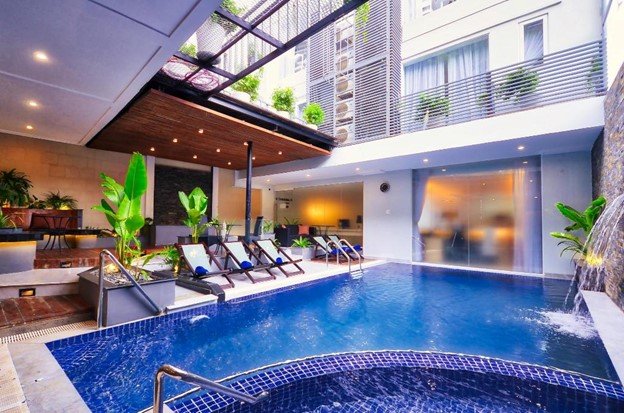

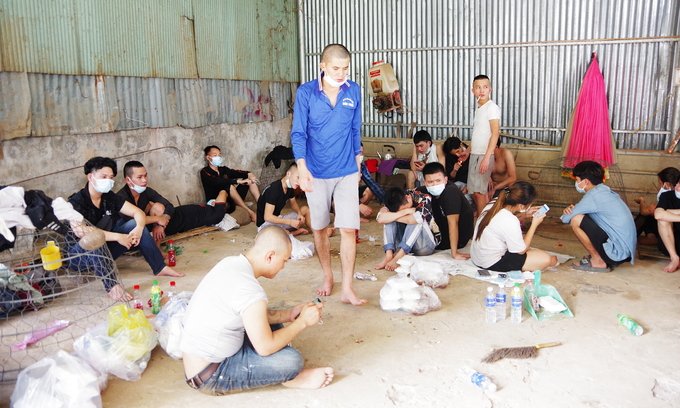
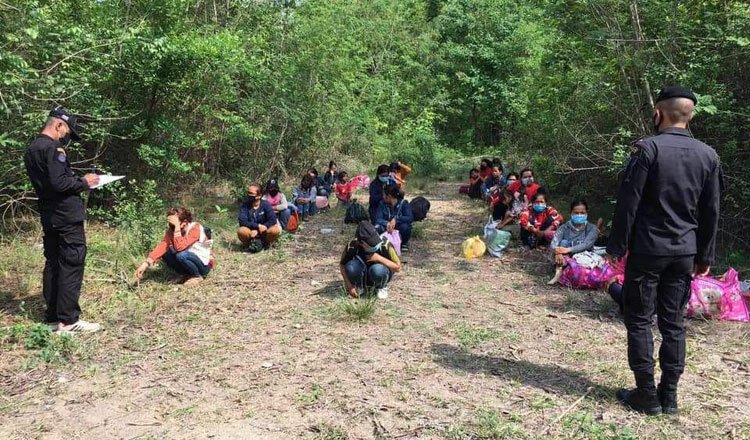

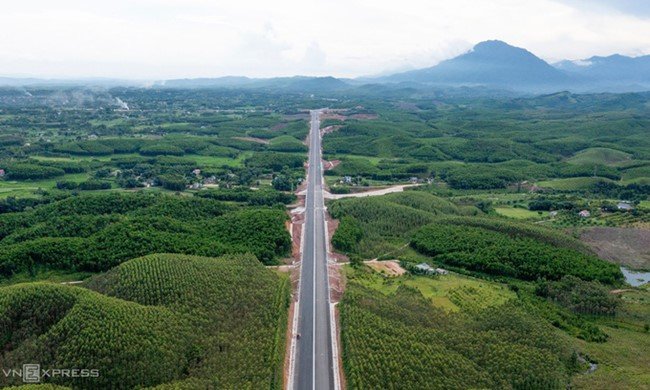



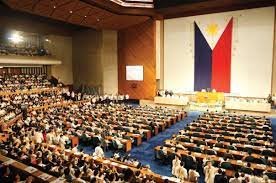



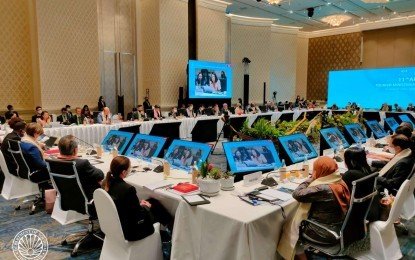



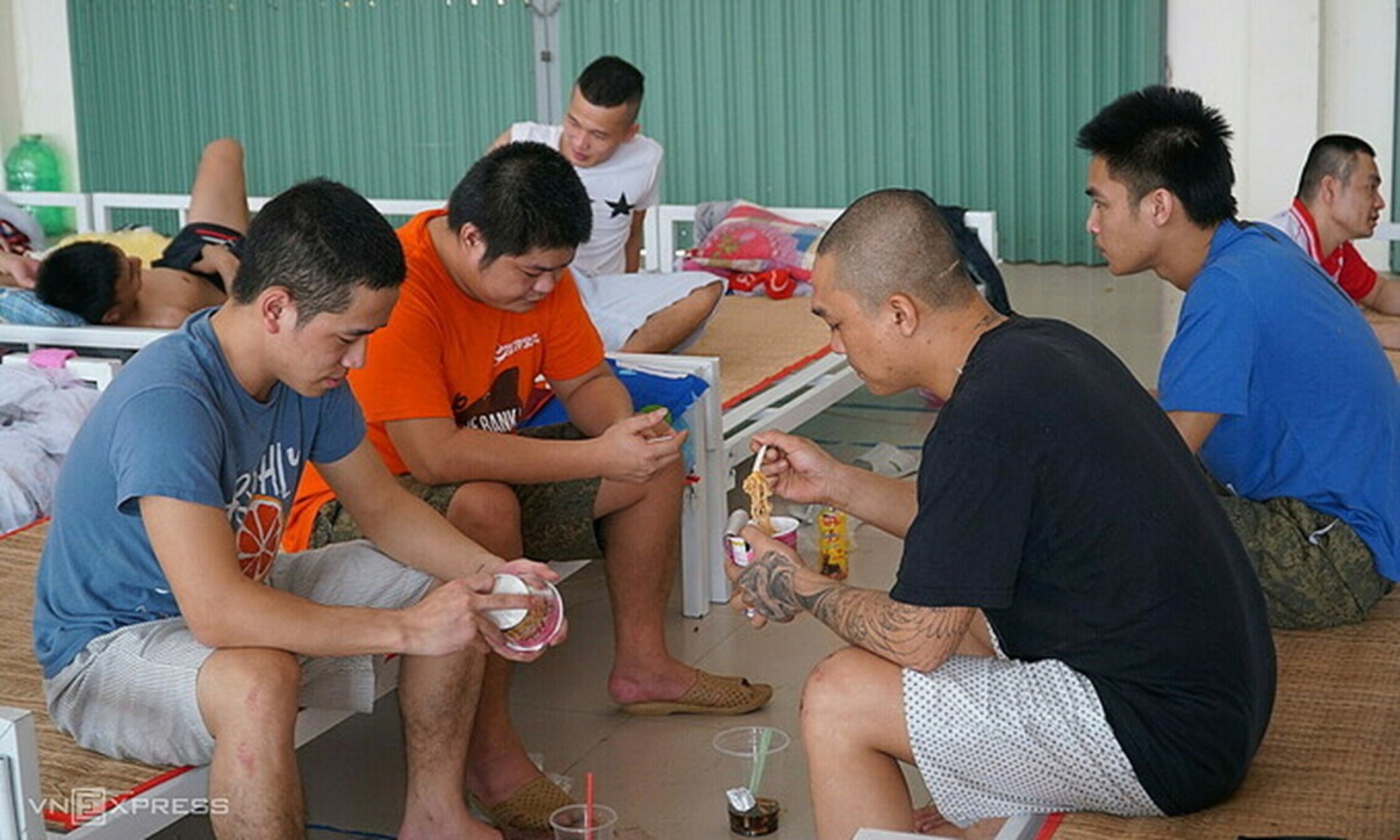

-3c267feeda0ea36aac47d1e04d1764fc.jpg.3e67a32f7bac9a0e515f0476f27d12d4.jpg)


